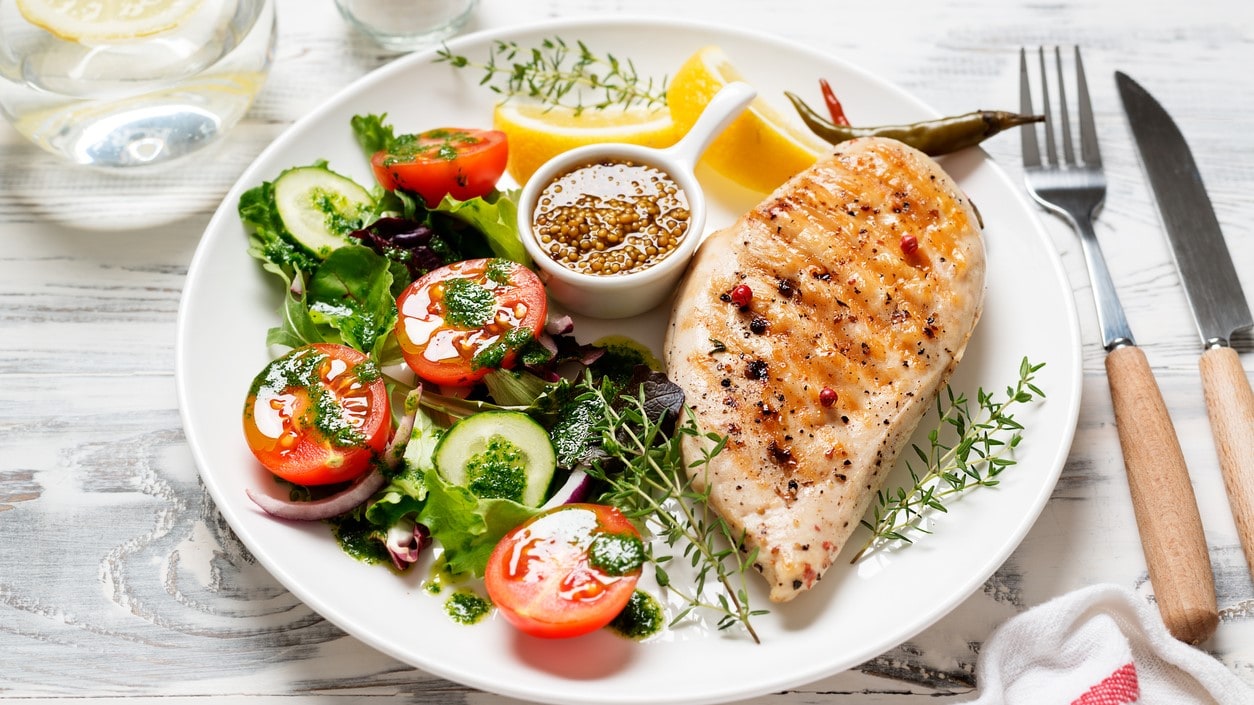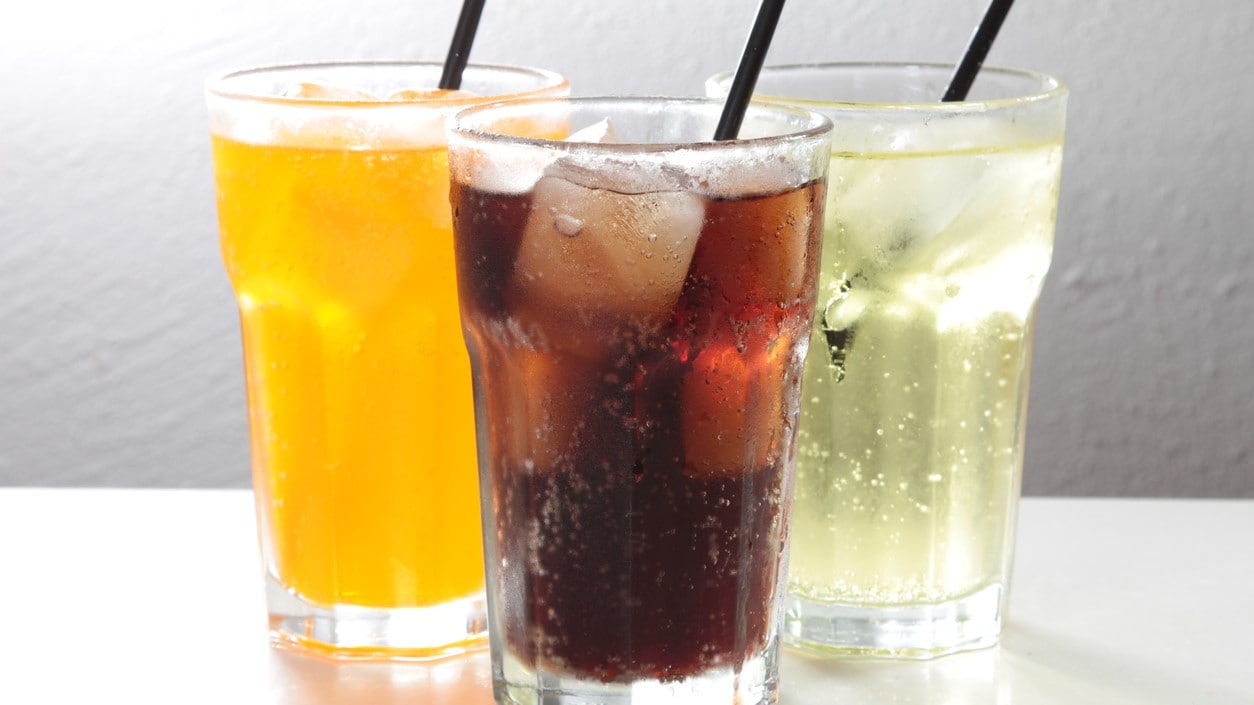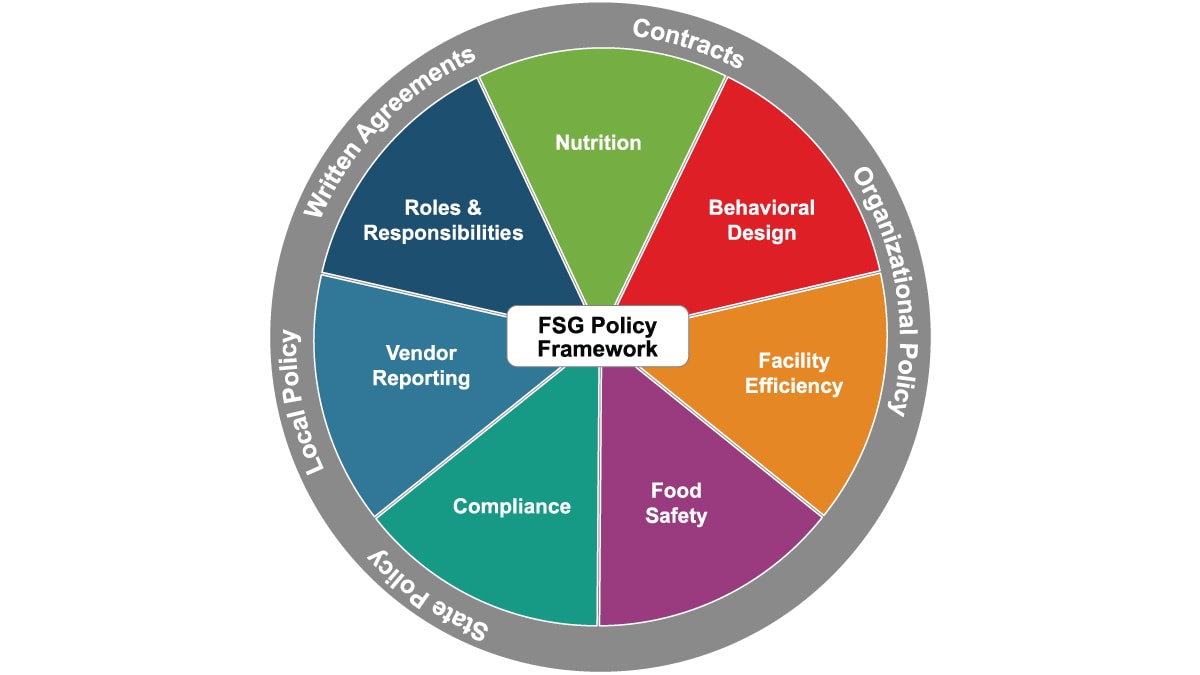At a glance
Public and private worksites, hospitals, parks, community institutions, and other settings should include nutrition standards in their food service guidelines. Consider using this sample language for prepared foods, packaged snacks, and beverages.

Introduction
On this page you can find sample language for incorporating nutrition standards into food service guidelines. However, it does not include all of the standards in the Food Service Guidelines for Federal Facilities. For the full list of nutrition standards, see Table 1 (prepared foods), and Table 3 (beverages). This sample language is for illustrative purposes only.

Sample language: Prepared foods
When providing prepared foods, the vendor must comply with the following food and nutrition standards:
Fruits and vegetables
- Offer a variety of at least three fruit options daily, with no added sugars. Fruit can be fresh, canned, frozen, or dried.
- Offer a variety of at least three non-fried vegetable options daily. Vegetables can be fresh, frozen, or canned, and served cooked or raw.
- Offer seasonal fruits and vegetables.
Grains
- Offer half of total grains as whole grain-rich products, daily.
Dairy
- Offer a variety of fat-free and low-fat (1%) dairy products daily, such as milk, yogurt, cheese, and fortified soy beverages.
Protein foods
- Offer a variety of protein foods, such as seafood, lean meats and poultry, eggs, legumes (beans and peas), nuts, seeds, and soy products, daily.
- Offer protein foods from plants, such as legumes (beans and peas), nuts, seeds, and soy products, at least three times per week.
- Offer seafood at least two times a week.
Desserts
- When desserts are available, offer 25% of desserts containing no more than 200 calories as served.
Sodium
- All meals offered contain no more than 800 mg sodium.
- All entrées offered contain no more than 600 mg sodium.
- All side items contain no more than 230 mg sodium.
Trans fat
- All foods do not include partially hydrogenated oils.
Calorie and nutrition labeling
- Provide calorie and nutrition information of standard menu items as required by the Food and Drug Administration's Menu Labeling Final Rule: Food Labeling; Nutrition Labeling of Standard Menu Items in Restaurants and Similar Retail Food Establishments.
Other considerations
- Limit deep-fried entrée options to no more than one choice per day.

Sample language: Packaged snacks
When providing packaged foods, the vendor must comply with the following food and nutrition standards:
- All packaged snacks contain no more than 230 mg sodium per package.
- All packaged snacks have 0 grams of trans fat.
- In addition to meeting the requirements above, at least 75% of packaged snacks meet the following food and nutrient standards:
- Food Standards
- Have as the first ingredient a fruit, vegetable, dairy product, or protein food; or
- Be a "whole grain-rich" grain product; or
- Be a combination food that contains at least one-quarter cup of fruits and/or vegetables.
- Nutrient Standards
- Calorie limit: no more than 200 calories.
- Saturated fat limit: less than 10% of calories.
- Exemptions: Reduced-fat cheese and part-skim mozzarella; nuts, seeds, and nut/seed butters; and dried fruit with nuts/seeds with no added nutritive sweeteners or fats.
- Sugar limit: no more than 35% of weight from total sugars in foods.
- Exemptions: Dried/dehydrated whole fruits or vegetables with no added nutritive sweeteners; dried whole fruits or pieces with nutritive sweeteners required for processing and/or palatability; products consisting of only exempt dried fruit with nuts and/or seeds with no added nutritive sweeteners or fats.
- Calorie Labeling
- All snack foods sold in vending machines meet the Food and Drug Administration's Vending Machine Final Rule: Food Labeling; Calorie Labeling of Articles of Food in Vending Machines.
- Food Standards

Sample language: Beverages
When providing beverages, the vendor must comply with the following food and nutrition standards:
- Provide free access to chilled, potable water.
- When milk and fortified soy beverages are available, offer fat-free and low-fat (1%) beverages with no added sugars.
- When juice is available, offer 100% juice with no added sugars.
- At least 50% of available beverage choices contain no more than 40 calories per 8 fluid ounces [excluding 100% juice and unsweetened fat-free or low-fat (1%) milk].








